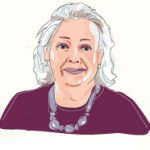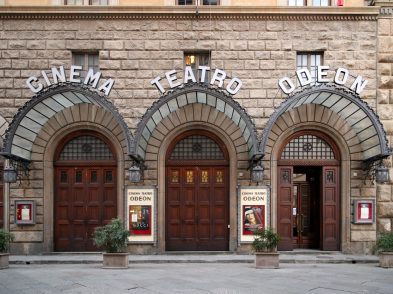Relations between Florence and Ravenna have been somewhat strained for, believe it or not, seven centuries. The reason is because one of Florence’s most illustrious native sons, Dante Alighieri, is buried in Ravenna instead of in his hometown. On their part, the citizens of Ravenna argue that he should remain where he is, with them: firstly, because Dante died of malaria in their city on September 14, 1321 on his return from a diplomatic mission to Venice and, secondly, because Florence had exiled him and he had chosen not to return to the place that had treated him so badly.

Undaunted by two futile attempts in 1396 and in 1429 to have Dante’s body returned, Florence saw its best opportunity of success when Giovanni di Lorenzo de’ Medici ascended to the papal throne as Leo X in 1513. So, in October 1519, the Accademia Medicea, which included Michelangelo among its members, petitioned the pope for the restitution of the body. In agreement, the pope sent a delegation to take the bones back to Florence. But, once in Ravenna, to its surprise, when the delegation opened the sarcophagus kept at the Basilica of San Francesco, it was empty. The Franciscan friars, custodians of the body, had removed Dante’s remains by making a hole in the wall between their monastery and the tomb. They then hid them in the cloister of the monastery until 1677, when one of the friars, Antonio Santi, identified the poet’s bones and put them on display.
In 1781, following the completion of a mausoleum especially for Dante’s remains, designed by Camillo Morigia, the body was transferred there. However, in 1810, after Napoleon Bonaparte ordered the suppression of religious orders, the friars yet again secreted the casket to prevent it being looted. This time they put it under what had been a doorway between the Basilica of San Francesco and the Braccioforte Chapel. After the friars were forced to leave the priory, the casket lay forgotten.
Only by chance was the casket was stumbled upon when renovations were underway at the Basilica of San Francesco for celebrating the sixth centennial of Dante’s birth in May 1865. Immediately after its discovery, the City of Ravenna set up a commission to investigate the find. Reports by a team of pathologists and calligraphers were presented. On removing the bones from their casing and laying them out on a table, the chief pathologist Professor Giovanni Puglioli described them as “an almost complete skeleton”, with only a fragment of the cranium, all of the lower jaw and three joints of the right hand missing. In his opinion, all the bones of “the same form, dimension and colour” belonged to a single male individual of advanced age, which had been untouched since their interment. His only regret was that scientific progress of his day was not advanced enough for him to date them, but, he believed, the individual was between 5.5 and 5.7 feet tall. Finding the skull to be larger than the norm, he stated that “the skull of superior men is commonly bigger and more beautiful that that of men with mediocre intelligence”. He cited Napoleon, Cromwell and Byron to support this theory.
The calligrapher confirmed that both an inscription inside the lid of the casket divulging Dantis ossa denuper revisa 3 Junii, 1677 and the scroll found inside it bearing the phrase Dantis ossa a me Frate Antonio Santi hic posita 1677, die 18 Octobris had been written by Friar Santi.
During the 1865 celebrations, the bones were reassembled and exhibited for two days in a specially constructed wooden and crystal sarcophagus placed in the Braccioforte Chapel before they were re-interred in Morigia’s mausoleum. Hundreds of people flocked to see them.
For fear of bombardment or pillage during the Second World War, Dante’s remains were again moved for safekeeping. Taken from the mausoleum in March 1944, the casket was buried in the garden nearby until December 1945 when, no longer in danger, it was returned to its former resting place. But, to ensure that no one forgets its claim, on the anniversary of Dante’s death every year, the City of Florence sends olive oil to burn perennially in the 17th-century votive lamp hanging in the mausoleum that it had gifted to its rival city.
In the meantime, since 1829, a magnificent empty cenotaph patiently awaits Dante’s arrival at the Basilica of Santa Croce in Florence, a pantheon of Italy’s greats. The inscription on it is from Canto IV of Dante’s Inferno, which reads “honour the loftiest of poets”. But in Florence, they count on the next line of the Canto, which predicts “his shadow, which had departed, now returns”.
To see Dante’s cenotaph in Florence, you can visit the Santa Croce Basilica complex from Monday to Saturday, 9:30 am–5:30 pm. For more information, see Santa Croce Opera’s website. For information on Dante’s mausoleum in Ravenna, head here. / PLEASE NOTE that these monuments are currently closed due to Covid-19.







